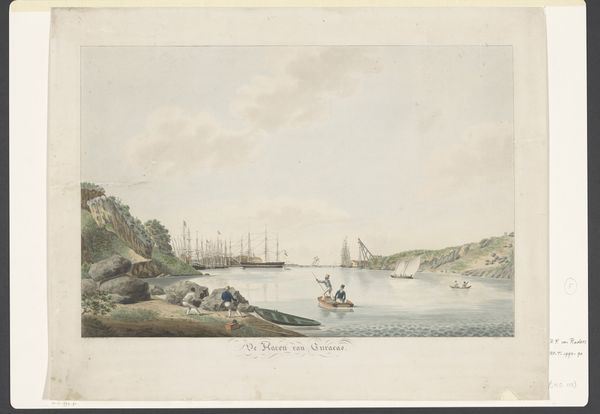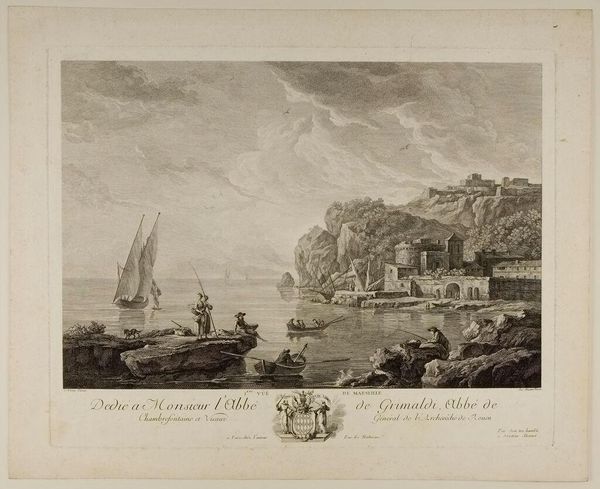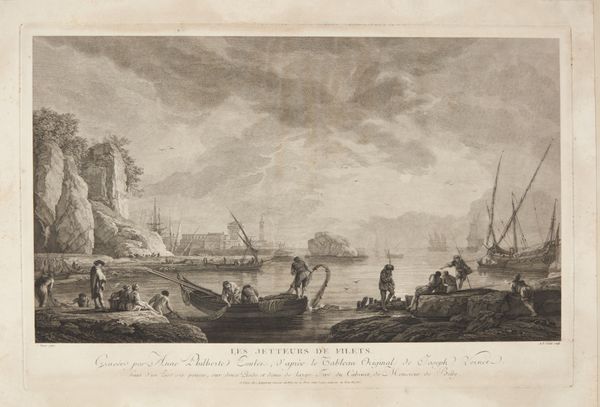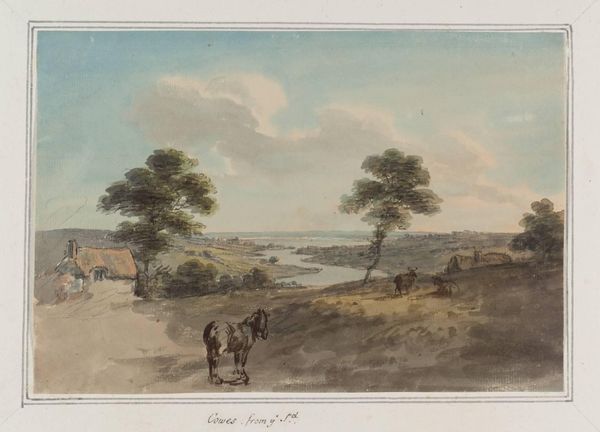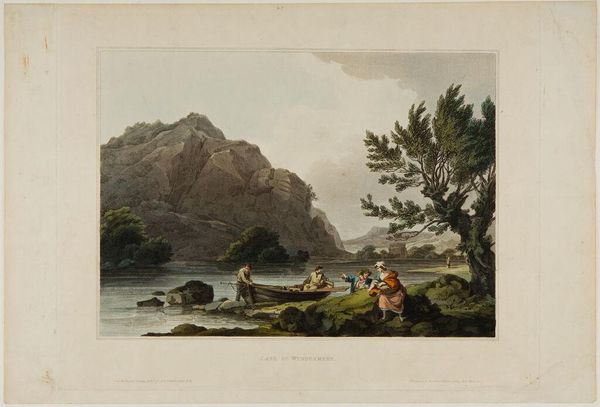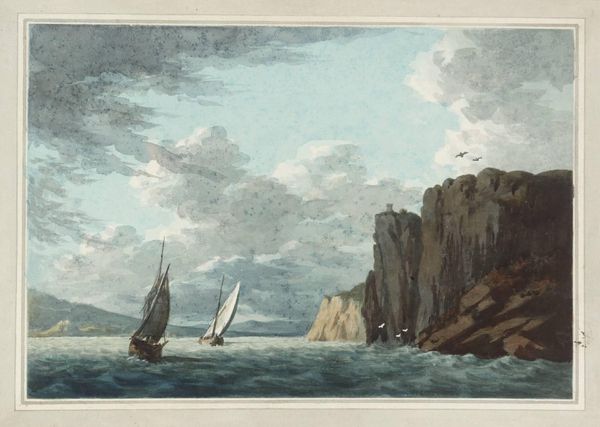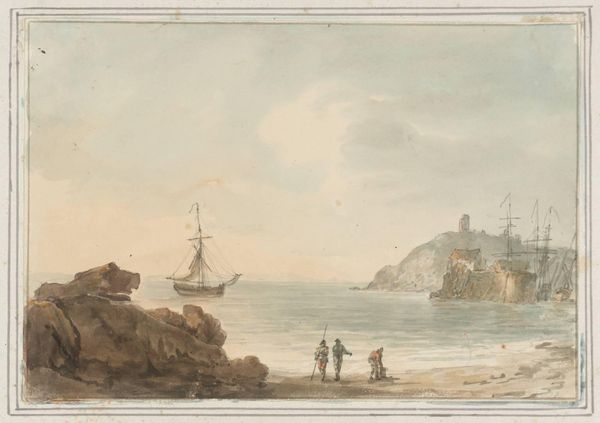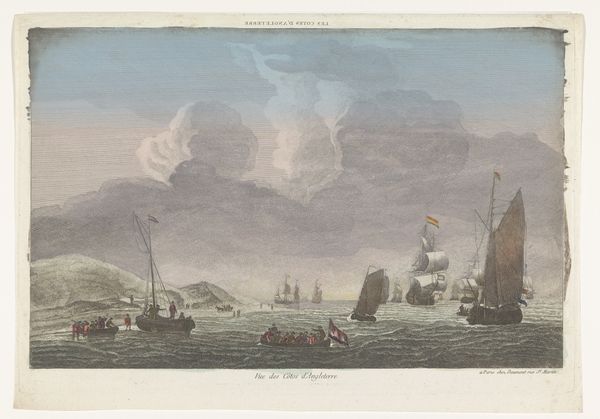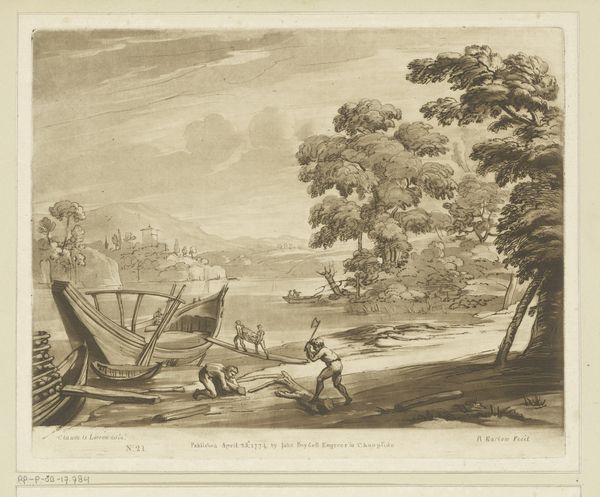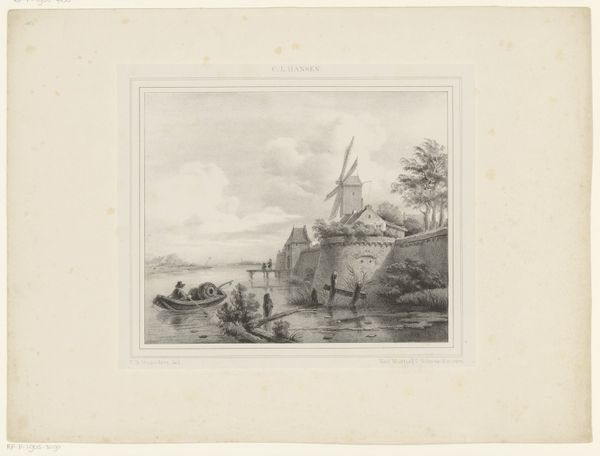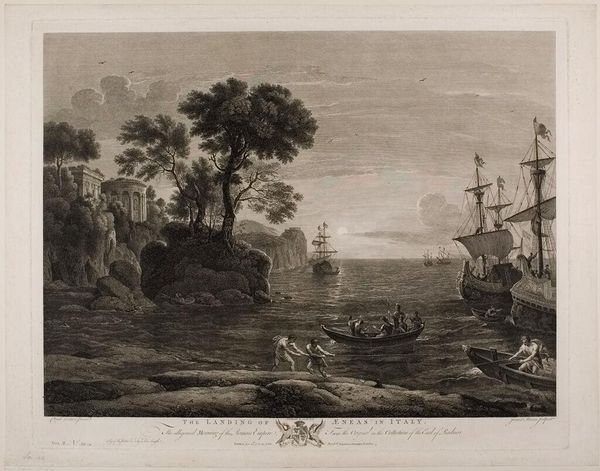
painting, plein-air, watercolor
#
figurative
#
water colours
#
narrative-art
#
painting
#
plein-air
#
landscape
#
charcoal drawing
#
figuration
#
watercolor
#
coloured pencil
#
romanticism
#
genre-painting
#
watercolor
Copyright: Public Domain: Artvee
Curator: Ah, this piece by George Morland. It’s called "Smugglers," created in 1793. It really captures a moment in time, doesn’t it? Editor: It’s a little romantic, isn't it? The light is soft, and that coastal scene just breathes atmosphere. But there's a nervous tension beneath it all – you can feel it. Curator: Definitely. Morland was fascinated by these kinds of genre scenes – everyday life, but with an edge. This one uses watercolors, charcoal drawing, and colored pencil in such a delicate way. It makes the harsh realities almost poetic. I can feel the air coming off the canvas. Editor: Right, "poetic." And that's where the historical context comes slamming in, doesn’t it? Smuggling wasn’t some harmless game. It speaks to oppressive trade laws, poverty driving people to desperate measures, and wealth accumulated through illicit means, playing on the exploitation of labor in Britain. The canvas breathes an illicit reality. Curator: Absolutely. He paints the human element—the "why" behind the illegal trade—so deftly, even if we do, as observers, sit far removed. See how he’s positioned the figures, caught mid-action but relaxed within their activity, at least in how their forms present to us as viewers. There's something very vulnerable in their faces too. Do you see it? Like even here they're hoping not to be discovered? I feel as if I’ve walked up on them in real time, they just need a cue to run away and escape being apprehended. Editor: I agree. But look at who these figures are serving, and who are these laborers at the shoreline truly serving, not just those on that beach. It makes you think of those outside these local environs and communities. That is part of Morland's storytelling, no? Even if it makes us confront an unpleasant reality and consider class struggle and exploitation, issues very ripe in England, right at that historical moment. Curator: Perhaps he wants us to see all those facets. The rough beauty, the desperation, the tiny human drama, as the center of things, because they always are the very human faces of struggle. I feel for them. Editor: Exactly! And I feel something deeper about why. It is the role of art in questioning social injustice and highlighting the imbalances of power that resonate even centuries later. So thanks, Morland! Curator: Indeed. It really gives you something to think about, beyond the aesthetic appeal.
Comments
No comments
Be the first to comment and join the conversation on the ultimate creative platform.
